
Wasps can be found everywhere in the world, except Antarctica and they can sting repeatedly. Their nests are normally found in basements, sheds or dark and cool places.
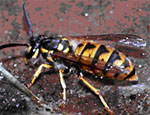
European or German Wasp (Vespula Germacica)
The European wasp was introduced into Australia, during the latter half of the twentieth century, and is now a pest in most Australian States. The European wasp is about 1.3 cm long and has typical wasp colours of black and yellow. Unlike honey bees, European wasps can sting many times when disturbed, particularly if this occurs in or near their nest. Their stings, particularly those from a whole swarm, can require medical attention.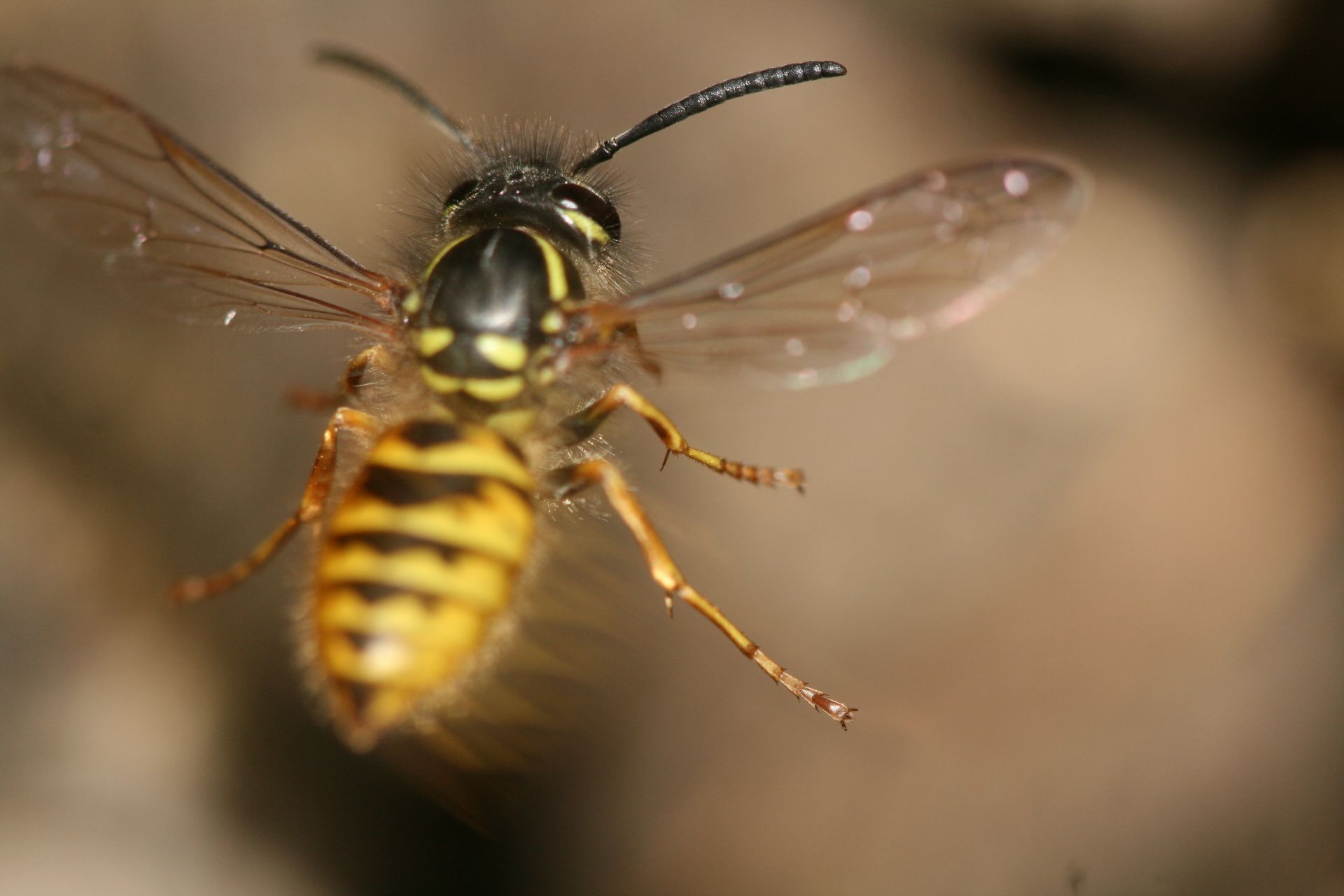
English Wasp (Vespula Vulgaris)
The English wasp is a social insect with bold black and yellow bands, it is very similar in appearance to the European wasp, so it is important to have wasps identified before control measures are applied. To date the English wasp has only be sighted in Victoria, Australia.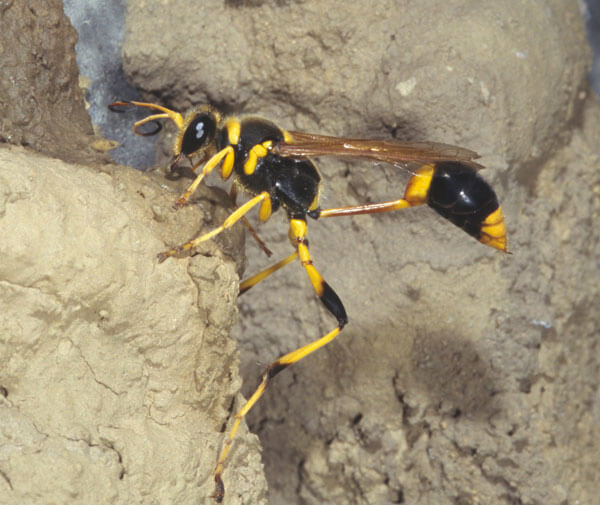
Mud Dauber Wasp (Sceliphron laetum)
Mud dauber wasps build their nests from mud and they are long and slender wasps and are about 2.5 cm in length. There are three common species of mud daubers, each with distinctive colouring: the organ-pipe mud dauber (solid black colouring), the black and yellow mud dauber and a metallic-blue mud dauber with blue wings. The organ-pipe mud dauber as the name implies builds nests in the shape of a cylindrical tube resembling an organ pipe of pan flute. The black and yellow mud dauber’s nest is comprised of a series of cylindrical cells that are plastered over to form a smooth nest about the size of a lemon. The metallic-blue dauber foregoes building a nest altogether and simply uses the abandoned nests of the other two species. Mud daubers are not normally aggressive but can become more so when threatened. Stings are uncommon.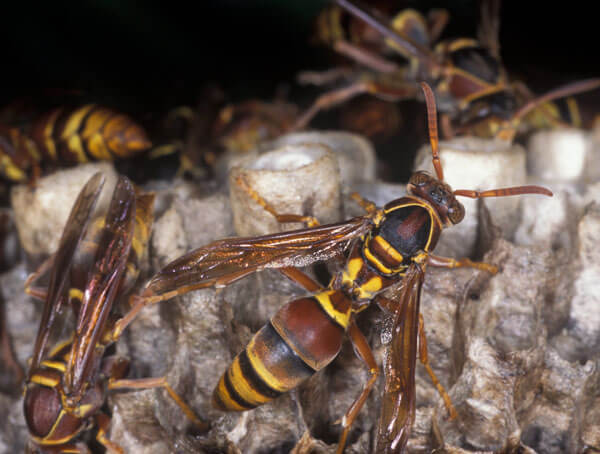
Native Paper Wasps (Polistes humilis)
Native paper wasps are 2-2.5 cm long and they tend to only be aggressive when defending their nests and are otherwise beneficial insects to have around the garden. Native paper wasps make nests from paper, they chew up strips of bark or plant stems and spit it out to form a rough paper which they use to construct water-resistant nests that appear to be made of grey or brown papery material.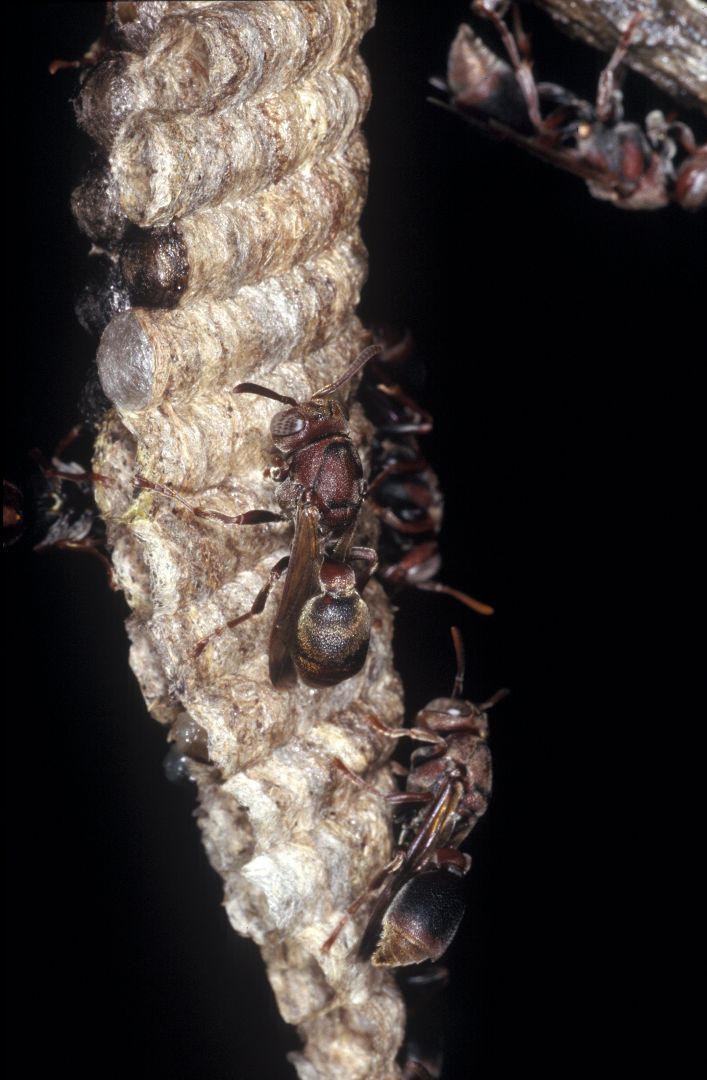
Native Paper Wasps (Ropalidia revolutionalis)
Stick-nest brown paper wasps are common in Brisbane gardens and bushlands. This species is the smallest of the paper wasps and is dark reddish-brown in colour. Their nests look like a group of small sticks hanging off a tree branch and consists of several adjacent combs, with each comb about 100mm long. They are not aggressive but will sting if their nest is disturbed. Attacks on humans will lead to painful stings, which can potentially produce a fatal anaphylactic reaction in some individuals. These wasps’ nests are therefore regarded as rather hazardous.Control
The services of a pest control technician are recommended as it is the safest and most effective means to control wasps.
Control measures are best carried out at night, when the wasps are in their nest. The nest can be covered with plastic sheeting when the insecticide is introduced. This way, the wasps cannot escape and leave the colony, reducing the possibility of the operator being stung. It is very important that body and facial protection is worn when working near wasps.
It is essential to isolate and destroy the nest, using a pesticide registered for this use. Propoxur and Carbaryl Dust are effective in controlling wasps in their nest. An aerosol mixture of Propoxur and Dichlorvos is also effective. The nest can then be removed and destroyed in case any wasps have survived the treatment.

